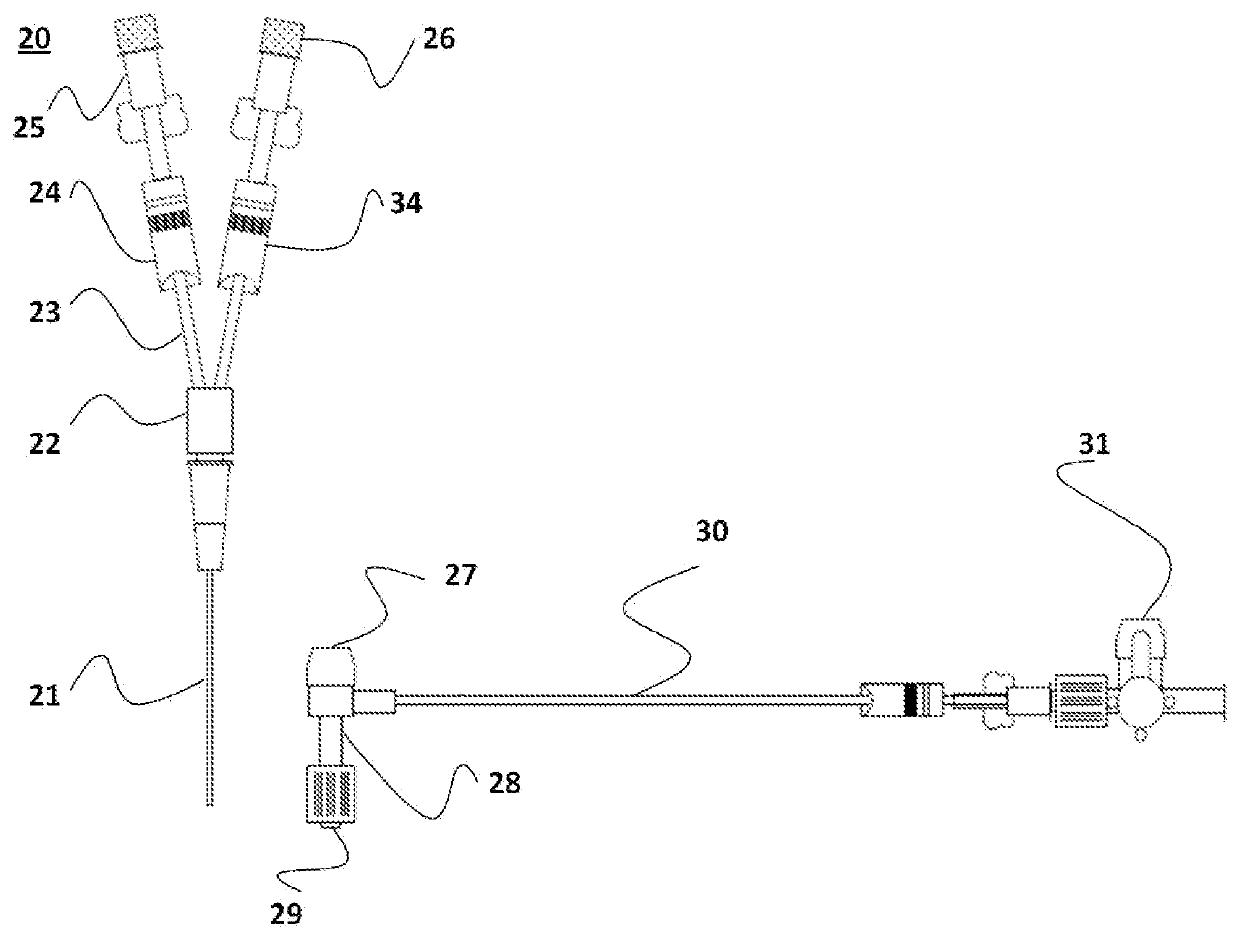Micro-volume blood transfer device
a blood transfer device and micro-volume technology, applied in the field of medical devices, can solve the problems of no system on the market today that can provide such a low clearance and such a low flushing volume, and achieve the effect of reducing the risk of infection in patients and minimizing the number of line accesses
- Summary
- Abstract
- Description
- Claims
- Application Information
AI Technical Summary
Benefits of technology
Problems solved by technology
Method used
Image
Examples
Embodiment Construction
[0031]The micro-volume blood transfer device, a MVBTD 20, is depicted in FIG. 1. MVBTD 20 is disposed with a capillary-size transfer tube between 18-24 gauge, but which is preferably a 20 gauge micro bore transfer tube 21 between 30-40 mm in length with a blunt tip, 0.9 mm in outer diameter and 0.584 mm in inner diameter in a preferred embodiment. The micro bore transfer tube 21 is bonded to a Y-Connector 22, 24 mm in total length with 10 mm that serve as the male component to the hub holding the micro bore transfer tube 21. The Y-connector 22 is attached to micro bore extension tubes 23, which have a 1.9 mm outer diameter and a 0.9 mm inner diameter, and are 42 mm in length, in a preferred embodiment, but could range between 20-65 mm in alternative embodiments. The length of the micro bore extension tubes 23 along with the blunt transfer tube 21 is calibrated to allow exactly the volume required to clear three times the dead space required to obtain clean blood, approximately 0.5 m...
PUM
 Login to View More
Login to View More Abstract
Description
Claims
Application Information
 Login to View More
Login to View More - R&D
- Intellectual Property
- Life Sciences
- Materials
- Tech Scout
- Unparalleled Data Quality
- Higher Quality Content
- 60% Fewer Hallucinations
Browse by: Latest US Patents, China's latest patents, Technical Efficacy Thesaurus, Application Domain, Technology Topic, Popular Technical Reports.
© 2025 PatSnap. All rights reserved.Legal|Privacy policy|Modern Slavery Act Transparency Statement|Sitemap|About US| Contact US: help@patsnap.com

